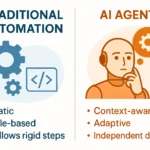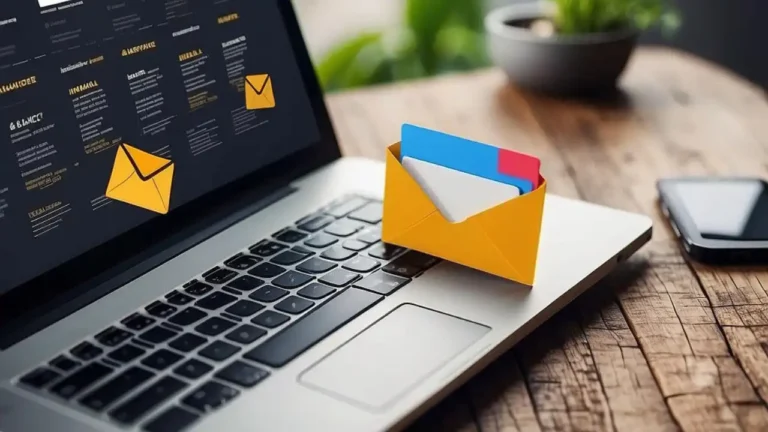You've likely heard that Pinterest can be a powerful tool for driving traffic to your website. But what does it take to make that happen? In this post, we'll share some tips and tricks for using Pinterest to drive more traffic to your site. Ready to give it a try? Let's get started!
How To Use Pinterest To Drive Traffic
The Complete Beginner’s Guide: You might already know how valuable Pinterest can be for driving traffic back to your site. But with so many pins and boards out there, where do you even begin? This beginner’s guide will show you exactly how to use one of the top social networks for driving traffic.
From tips on how best to approach pinning, defining your own visual style, and crafting effective calls-to-action (CTAs), we’ll walk you through all of it!
How To Pin On Time
It’s not just about being active. You want to make sure you’re adding value and providing users with an experience they can enjoy right now, not something that will be relevant later when they have time. Make it easy for someone who comes across your pin on Pinterest (or Twitter, Facebook, or Google+) to buy it right away, rather than having them think this is interesting, I need to check out more stuff like this later.
Provide links and resources in every pin so people can visit your site and purchase items immediately. Add social media buttons onto your site so customers can follow you wherever they are browsing online—not just via desktop computers.
Use Rich Pins
Rich Pins are Pinterest’s new tool for making product pins more interactive. With Rich Pins, you can include price, availability, and more information about your products in your pins. They’re great for selling products directly from Pinterest and for driving traffic to your website or sales page when someone wants to buy something online.
If you want to sell products on Pinterest without investing in eCommerce software or hiring an outside company, Rich Pins are one of your best tools. In order to use them effectively, there are two things you should do first: set up Rich Pins and make sure you have some great content before putting them into practice.
If you want to sell on Pinterest then learn How to sell on Pinterest like Pro
Focus on Pinterest SEO
Before you start setting up your business on Pinterest, it’s important to understand how search engine optimization (SEO) works. SEO is basically just a fancy way of saying how people will find your product or service. And while SEO can seem like an intimidating topic, it's actually quite straightforward and relatively easy to manage once you have an understanding of its components.
When it comes to selling on Pinterest, there are three main aspects of SEO that are essential for marketing your business. The first is optimizing your product page for search engines. This means choosing appropriate keywords and using those keywords in relevant titles and tags.
Implement content marketing
There are many ways to use content marketing as part of your sales strategy. If you’re launching a new product, create an ebook or offer video tutorials and tips on how people can get started with your service. If you’re working with larger corporations, share case studies and other data showing how your product works well in large organizations.
The point is that, no matter what niche you’re in, content marketing can help position you as an expert who helps people better reach their goals. In essence, content marketing allows you to develop credibility with your target audience before they need any one-on-one assistance from you.
How To Find Relevant Pins And Profiles
The more relevant pins and sellers you reach out to, the better chance you have of connecting with people who might be interested in what you’re selling. To find these accounts, use Pinterest’s people search feature or even Google by typing in keywords related to your product (for example, if I was selling beach towels I might search beach towels).
If someone has pinned or written about your item somewhere online, chances are they’ll pop up. Pay attention to which profile and boards they pin on; then find them there too! Consider reaching out by leaving a comment below their board or pin, or sending them an email saying that you like their work. Or both!
How To Write Great Headlines
Headlines are critical for web traffic. Without them, no one would click, and you'd have nobody reading your amazing content. So what does it take to write an incredible headline? The title of your post is often your most important asset; therefore, it’s crucial that you spend time crafting effective headlines.
Here are some great tips and resources that will help you write better headlines: How To Write Great Headlines
Where To Pin From
Google+ makes it easy to find content relevant to your product or service with hashtags. If you’re interested in selling on Pinterest, use Google+’s hashtag search feature for ideas about where and how you can pin. For example, you might type #fashion or #handbags into Google+ and see what surfaces.
Once you know what kind of pins are being shared, click over to that user's profile so you can learn more about her. For example, are she and her products similar in style? This step will help both your SEO efforts and your sales on Pinterest down the road.
What Type Of Products Should I Pin?
This is a common question that gets asked about selling on Pinterest. The fact of the matter is, you can sell anything and everything you want on Pinterest. This doesn’t mean it will sell well, but there’s no reason not to pin items if they are useful for your audience or if you personally find them interesting.
Your personality in your pins and boards will come through, so feel free to show off products that meet those criteria even if they aren’t top sellers.
How to enable Twitter card in Your blog and validate the Twitter card
Using Hashtags Effectively
Hashtags are a popular tool for marketers on social media, but using them effectively isn’t always easy. This is especially true with Pinterest, where boards and pins don’t include hashtags. Fortunately, there are multiple ways to get your content in front of potential customers using hashtags.
If you’re thinking about adding hashtags to your pin descriptions, here are some tips: Don’t use more than two or three unique tags per pin (six maximum). Unless you have an extremely small audience or have done the market research to prove otherwise, it is best not to overuse hashtags. Using too many will drive up costs and reduce exposure.
Analyze your performance using Pinterest analytics
You can get more insights by analyzing your performance using Pinterest analytics. It will help you determine which boards are performing well, who is engaging with your pins and how much traffic these pins are getting. This way, you’ll be able to create an effective marketing strategy that gives your pins some momentum.
For example, if you notice a lot of people repinning your food photos, then think about creating multiple boards that focus on different types of foods (i.e., desserts, breakfast foods, and appetizers). In contrast, if there are lots of comments and likes in relation to one specific board (i.e., DIY projects), then consider featuring those DIY projects more often or making additional boards for them.
Common Mistakes To Avoid When Creating And Promoting Pins
So you're getting ready to launch your campaign and promote it like crazy. That's great! To make sure you're doing things right, let's look at some common mistakes that people make when they begin promoting pins.
There are 5 specific mistakes that can really hurt your chances of success, so we'll go over each one individually Mistake #1: Focusing Too Much On Paid Traffic Some pinners spend all their time promoting through their ads instead of using their own boards or groups. In reality, there's nothing wrong with spending some money to attract visitors who aren't already familiar with your brand—but only after you've put in time cultivating relationships and growing awareness organically. If you're not starting out with an existing audience or following, paid traffic is probably going to be too expensive for most brands (and also hit-or-miss). Avoid spending too much money until you've exhausted every other option.
It is one of the common mistakes to avoid when you are promoting social content and if you want to know more mistakes details then please write in the comment box below.
Conclusions
So what are you waiting for? Start using these tips to increase traffic from Pinterest to your website. And if you’re looking for more help, don’t hesitate to reach out! We would be happy to share our own expert advice on how you can start seeing better results from Pinterest.









